Since starting her own Melbourne-based architectural practice in 2005, Fiona Winzar has received numerous awards and commendations from industry bodies for her works. And while she’s always embraced green building, of late she’s also been looking to the design principles of PassivHaus (PH) for inspiration and focused her efforts on emulating the standard’s high energy performance for her projects in Australia.
In short, PH is a voluntary standard born in Germany that targets both superior energy efficiency and thermal comfort for a home. Accredited PHs must meet a stringent criteria for building performance relating specifically to envelope airtightness, space heating demand and primary energy demand (see table).
While PH has reached extraordinary levels of popularity in Europe, this has not been the case in Australia, and according to our reader’s feedback this is for three main reasons:
- Cost: the initial cost of a PH is perceived as greater than a standard build and it requires construction techniques unfamiliar to the average Australian tradesman
- Embodied energy: while a PH produces less carbon from electricity use than a standard home, they generally require a greater number of imported and domestic building materials thereby increasing their embodied energy
- Suitability: another recurring argument is that the tightly-sealed envelopes of PHs don’t suit the nation’s climate or our affinity with open and dynamic living arrangements
However the latest project from the team at Fiona Winzar Architects (FWA) could well prove a rebuttal to all of these arguments.
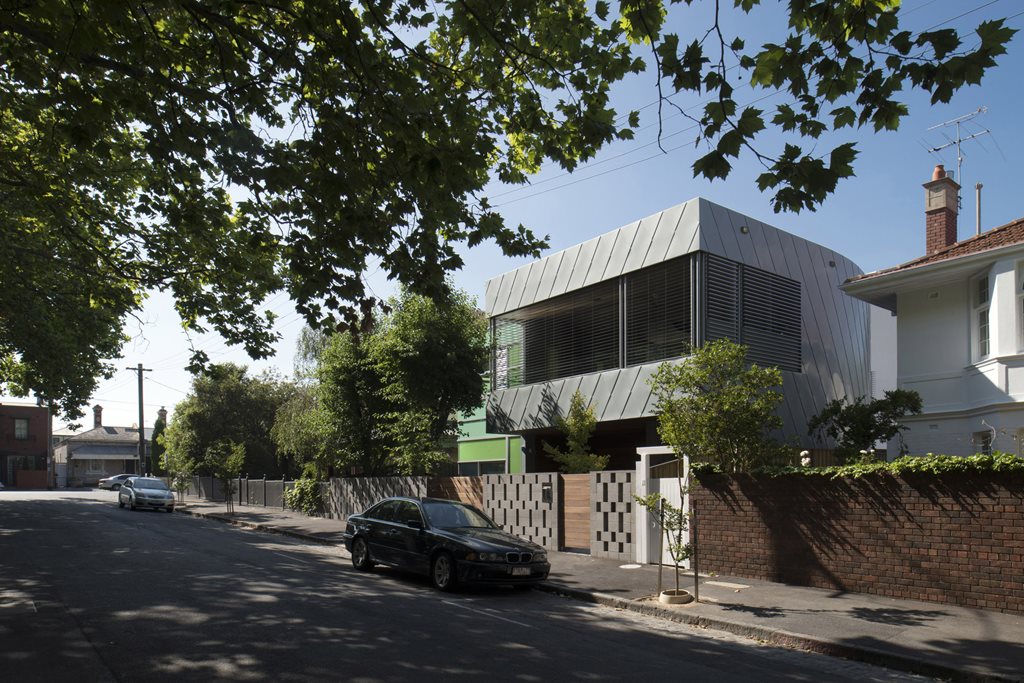
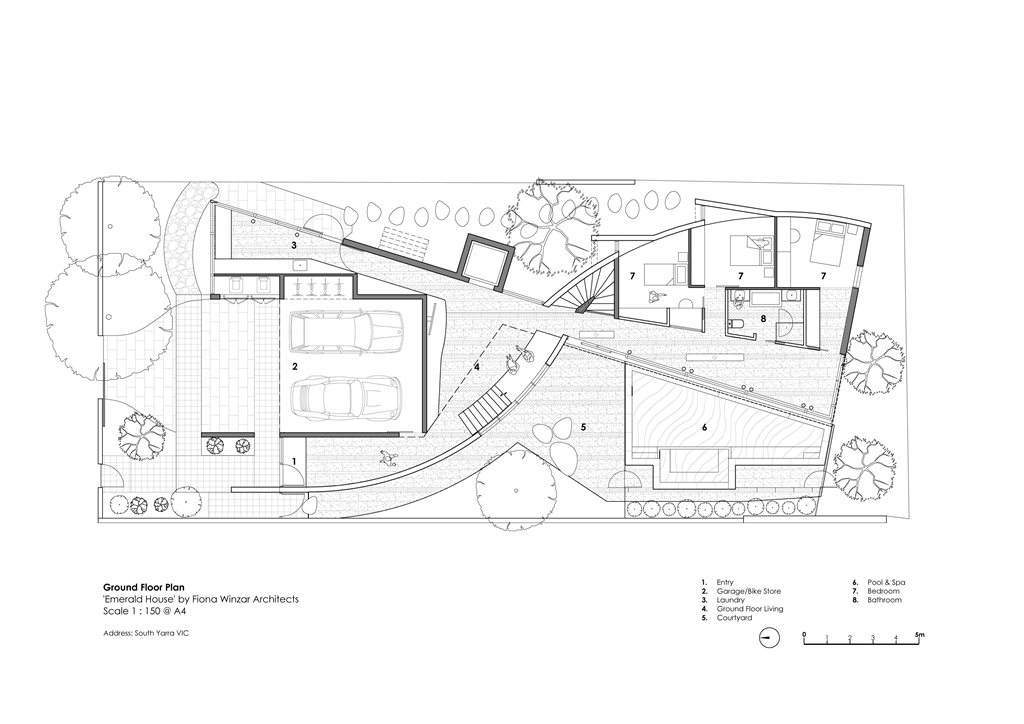
Emerald House in Melbourne’s South Yarra is a three-storey single dwelling, designed by FWA to achieve carbon-neutrality and for a minimum 100-year lifespan. It is defined by an S-shaped form clad in a customised diamond zinc façade that stretches the length of the site. This shape brings light and landscaping into the centre of the building and also provides an internal divide between the occupant’s living arrangements at the front of the house and their sleeping quarters at the back.
Emerald’s amenity, interiors and landscape design are luxurious on all accounts and it isn’t until you discover the deeper intricacies of the building’s materials and construction methodology that you begin to understand how extraordinary the home actually is.
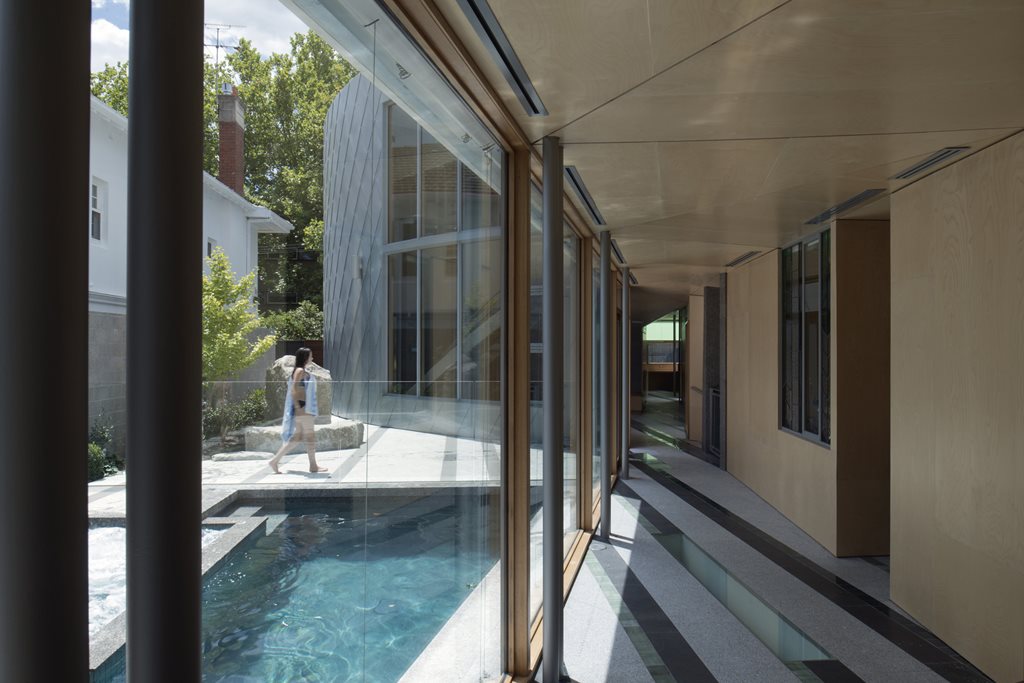
Before undergoing any sort of PH performance tests, the design of Emerald had already ticked most of the sustainability boxes. Its key living spaces face north and it has excellent cross ventilation, thermal mass, a solar photovoltaic system and a massive 22,000 litre water tank. It also adopts an integrated roof mounted Oventrop solar thermal system, which, with support from an efficient gas booster, provides domestic hot water and hydronic floor and spa heating for the home.
But for any designer looking to achieve PH certification, this is all for nothing if the building fails the stringent minimum performance criteria of PH for space heating energy demand, overall primary operational energy consumption and building envelope air leakage.
Winzar says her biggest challenge was finding a construction team and contractors who could deliver a building that met these performance measures, most notably the super-sealed and insulated building envelope which requires regular blower door testing and insulation tweaking. She explains that her site supervisor, Danny Maypiece, from Ducon Constructions had to be exceedingly attentive when coordinating his trades and had to ensure that all tradesmen were schooled in air-tightness practice and awareness before commencing work.
“Airtightness, high-performance insulation and fresh air ducting are relatively new in Australian architecture practice and generally involve imported products...Our building culture is risk averse.” Fiona Winzar, architect.
Other coordination challenges included integrating the home’s mechanical features to operate automatically and at the highest possible efficiency. Of the mechanical equipment, the most foreign to Australian buildings is Emerald’s Zehnder ComfoAir 550 energy-recovery ventilation unit and its Oventrop solar thermal hot water system.
Zhender products are widely used in Europe to transport fresh air into a building without the associated temperature fluctuations. An energy-recovery unit basically transfers temperature and moisture between the air coming into the building and the outbound air flow. This keeps the internal temperatures and humidity at a stable and comfortable temperature and, importantly, fresh air circulating in the otherwise stagnant internal atmosphere.
The Oventrop system is an American-designed evacuated tube solar energy generator. It begins its work by circulating pressurised heat transfer fluid through tubes located on a rooftop for solar heating. The fluid is then evacuated and sent to a storage collector with a built-in heat exchange coil. Heat is exchanged into the water used throughout the home for hot water and, in the case of Emerald House, for its hydronic floor heating system.
While highly efficient, both products are relatively new to Australian construction (Winzar says the Emerald House is the only house using Oventrop in the country that she is aware of) and less readily available to our markets.
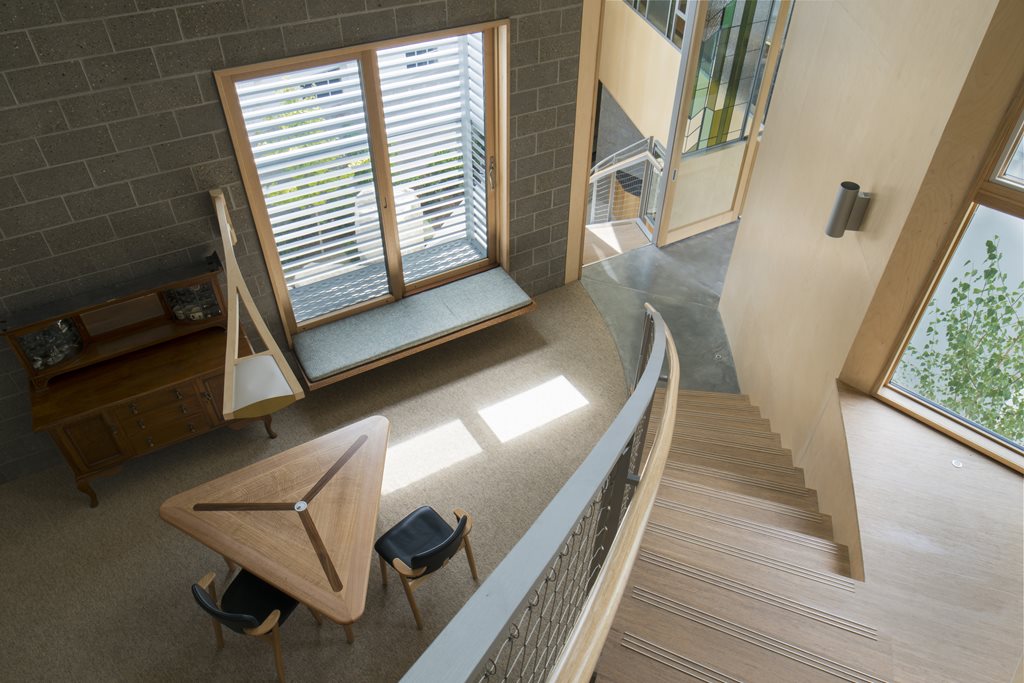
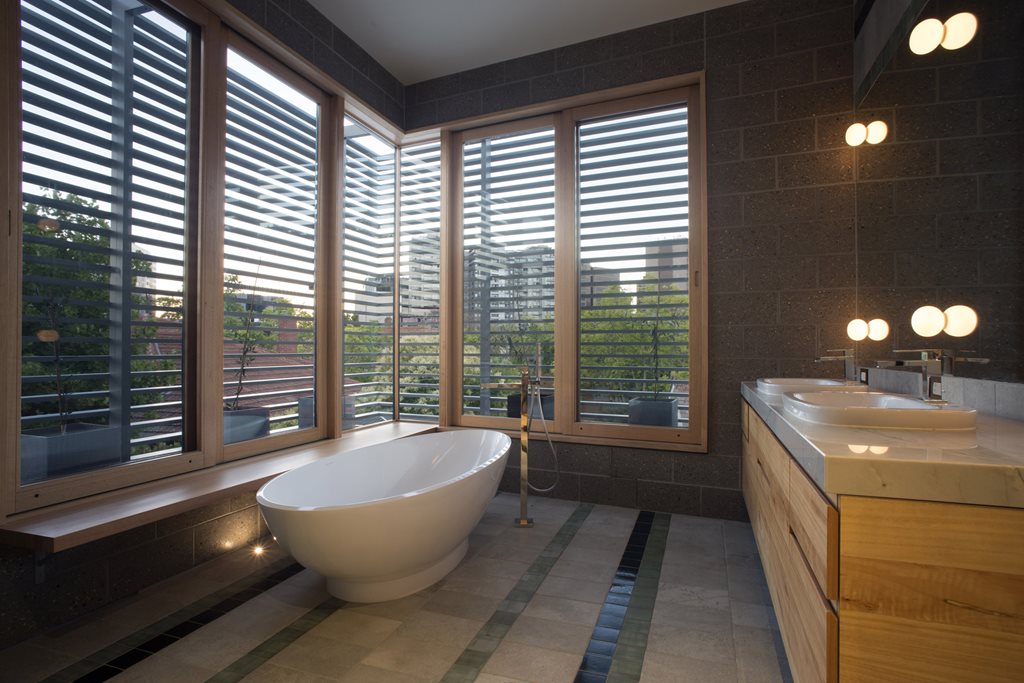
As mentioned, one of the key arguments used by PH sceptics in Australia is that they require a large number of building materials and have a high embodied energy. Winzar made an effort to address this issue by sourcing local and enduring materials for the major components of Emerald House. She explains that although the embodied energy of Emerald is increased by its heavy doses of concrete and zinc cladding, this is countered by the virtually maintenance-free 100-year life expectancy of these materials.
It should be said that although Emerald House is designed according to PH principals, it does not meet the performance criteria for envelope air leakage required for European standards and therefore will never become an accredited PH. GHD, the energy consultants who prepared the performance specifications for the Emerald House, modeled PH principles to suit Melbourne's climate. On this note, Winzar does agree with the recurring opinion that European PH requirements are not entirely relevant to the Australian climate, suggesting that we don’t need to design entirely to these standards to achieve the same level of sustainability in Australia.
“We need to create our own PH standards,” Winzar says.
“Standards that are suited and adaptable to our varying climates.”
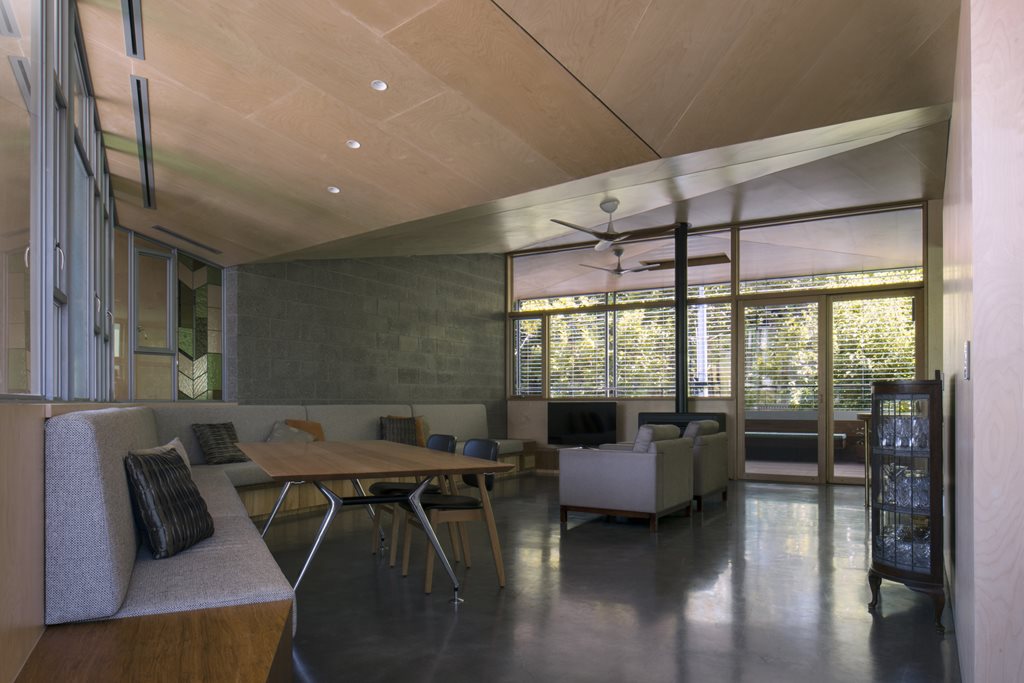
Aesthetically, Emerald House has all the design finesse of houses we saw take building design awards in 2015. It has popular interior finishes like pale birch ply and honed concrete block walls as well as consistent and interesting colour themes and a highly sculptural shape. Winzar also notes that the home’s interior has “an amazing feeling”, courtesy of the fresh air supplied by that Zhender energy-recovery unit.
But what could be considered the biggest achievement of all for FWA and its team of contractors and consultants is that they delivered Emerald House with only a 15 per cent increase to the base construction cost.
Emerald House is a luxurious, comfortable, carbon neutral home, designed by an architect and built for a reasonable price from mainly local materials. It has possibly one of the highest performing building envelopes of any structure in Australia and certainly one of the highest for a residential building in Victoria. Emerald House points to a future for sustainable domestic building in Australia where international best practice residential design plays a balanced role with site-specific architecture.
PEOPLE
ARCHITECT FIONA WINZAR ARCHITECTS BUILDER DUCON CONSTRUCTIONS STRUCTURAL CONSULTANT PERRETT SIMPSON STANTIN MECHANICAL CONSULTANT GHD LANDSCAPE CONSULTANT JIM FOGARTY ENERGY AND SUSTAINABILITY CONSULTANTS GHD
PRODUCTS
ROOFING BLUESCOPE LYSAGHT TRIMDECK COOLMAX EXTERNAL WALLS ADBRI CONCRETE DESIGNER MASONRY BLOCKS, CUSTOM-DESIGNED & FABRICATED RHEINOCLAD ZINC CLADDING, TOSCANO NATURAL RENDER WINDOWS AND DOORS MIGLAS SWIMMING POOL ENKI POOLS HARDWARE PITELLA INTERIOR WALLS SURFACE 2 BIRCH PLY BAMBOO STAIR TREADS LETO INSULATION KINGSPAN FLOORING BURNISHED CONCRETE, CARPET CAVALIER BREMWORTH LIGHTING LIGHTS & TRACKS KITCHEN TIMBER VENEERS GEORGE FETHERS FOREST VIC ASH VENEER BATHROOM TILES CITY TILER FLOOR & SWIMMING POOL TILES BAMSTONE HEATING & COOLING FRESH AIR DUCTING WITH ZEHNDER COMFOAIR 550 ENERGY RECOVERY VENTILATION UNIT HYDRONIC HEATING H2O HEATING

